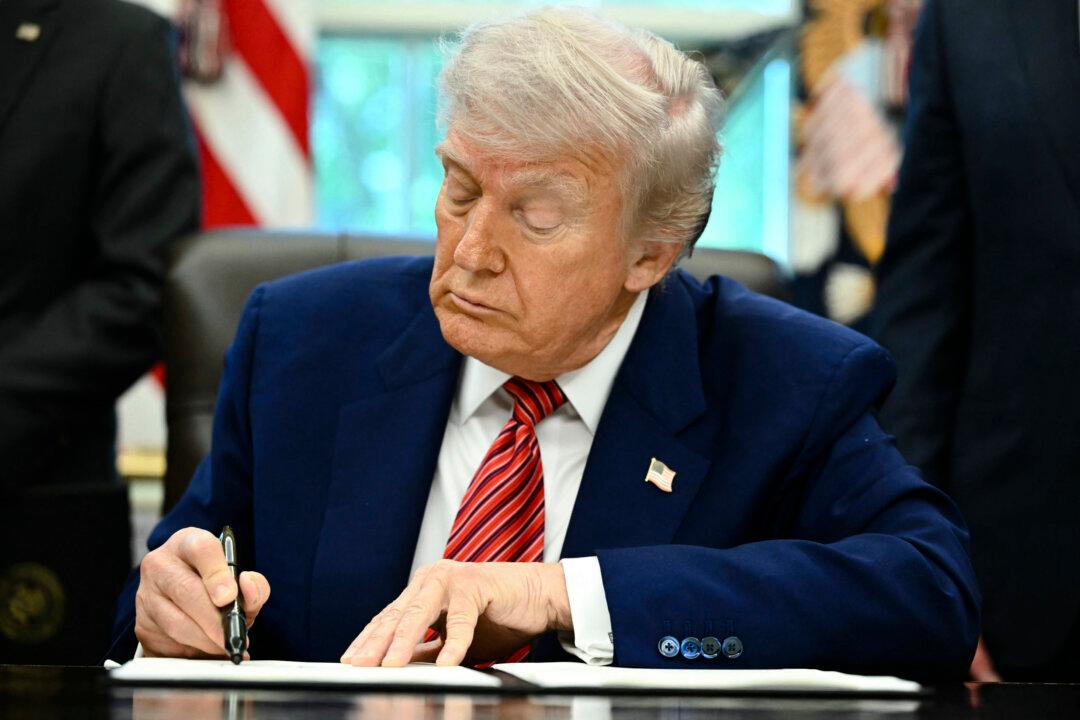President Donald Trump has signed an executive order to strengthen the United States against threats posed by drones and to encourage innovation in domestic drone technology manufacturing.
Michael Kratsios, who serves as director for the White House’s Office of Science and Technology Policy, said the June 6 order works to eliminate unlawful drone use throughout the country and help law enforcement assert more control over domestic airspace.
“The administration is cracking down on unlawful drone use, ordering a federal task force to ensure U.S. control over American skies, and prioritizing the detection and identification of drones in real time,” Kratsios told reporters during a press call on June 6.
The attacks saw Ukrainian intelligence agents use more than 100 inexpensive commercial-first drones to destroy between 10 and 12 of Russia’s nuclear bombers and damage many more aircraft.
Sebastian Gorka, senior director for counterterrorism at the National Security Council, said that Trump’s new order would help to better shield U.S. sites from similar attacks while also encouraging greater commercial innovation in the drone industry.
“Drones are a disruptive technology,” Gorka said. “They have an amazing potential for both good and ill.”
“The timing [of the order] couldn’t even be better than it is today, given what we witnessed with the remarkable drone operation that occurred just a few days ago in Russia,” he added.
Gorka said that the order would help the United States better secure its military installations, critical infrastructure, and mass gatherings such as concerts and sporting events from drone attacks.
To that end, the executive order establishes a federal task force to review and modernize the nation’s regulatory frameworks for drones, and encourages the timelier publication of a list of foreign drone manufacturers deemed to be a national security risk.
At the law enforcement level, the departments of Justice and Homeland Security would be tasked with integrating counter-drone technologies into joint counterterrorism task forces, and also establishing a training center to better equip officers with the tools and knowledge to secure mass gatherings from drone attacks.
Similarly, the order directs the FBI to establish a deputized system for training state, local, and tribal law enforcement agencies in counter-drone operations and open grant opportunities to non-federal agencies seeking to purchase American-made drones.
Finally, the order directs the Federal Aviation Administration to expedite its rule-making process for restricting drone flights over sensitive sites, and for the government to detect and identify drones in real time using remote identification technologies.
A senior White House official said in a press call that the threat posed by commercial drones to American citizens was an increasingly pressing issue.
Drones, the official said, were used frequently to fly drugs over the southern border and to surveil military and border protection personnel there.
The official added that there had already been eight criminal cases concerning the weaponization of drones in the United States, three more cases involving Chinese nationals using drones to surveil sensitive U.S. military facilities, and numerous incidents of drones flying over sporting events.
To that end, the official said, Trump’s latest executive order would encourage greater adaptation to drone threats across domains while preserving innovation by encouraging decreased business regulations.
“We really see three different mission spaces. There’s homeland security threats like the border, there’s national security threats like espionage [and] terrorism, and then there’s just the generic public safety threats from the careless and clueless,” the official said.







